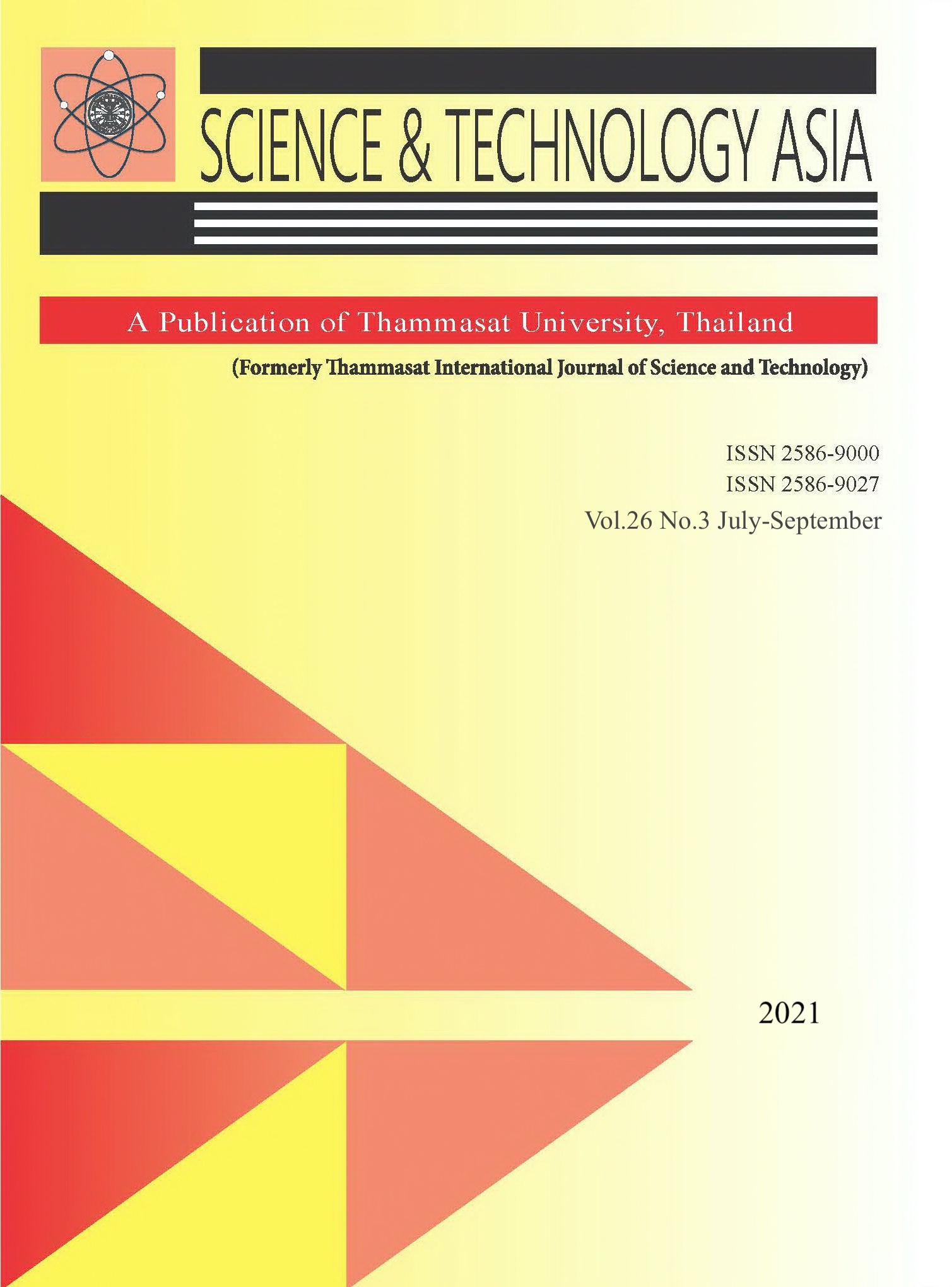Diatom-Cyanobacterial Biofilm Formation and Its Effects on Sediment Stability under Laboratory Conditions
Main Article Content
Abstract
Coastal erosion in the Inner Gulf of Thailand is a major environmental issue. Algal biofilms represent one possible means of remediation. Cultures of six microalgae, three diatom species, and three cyanobacterial species, isolated from an eroded mudflat in Ban Khun Samut Chin were studied for their ability to produce exopolysaccharides (EPS) in xenic single species or mixed species cultures. Carbohydrates, a proxy for biofilm, were measured in the culture supernatants via the phenol/sulfuric acid procedure. EPS ranged from 6.57 to 11.78 mg/L, with diatoms having higher levels than cyanobacteria. EPS levels in mixed species cultures were either enhanced or reduced, ranging from 1. 93 to 39. 97 mg/ L, depending on the algae tested and whether two, three, or four algae were present in the mixed community. Strong attachment of biofilm was detected in the mixed-species culture of a diatom, Cylindrotheca closterium, and a cyanobacterium, Oscillatoria subbrevis. The EPS level in this mixed culture was also one of the highest recorded, suggesting this pair could be especially beneficial for substrate stabilization. To test this hypothesis, this mixed culture was added to pre-cleaned sediment and allowed to grow for 15 days for surface biofilm accumulation. Turbulent flow conditions were generated using forces both in vertical and horizontal directions above sediment surfaces. Less suspended sediment was recorded in the water column overlaying the sediment with biofilm coverage in comparison to sediment without surface biofilm coverage. This indicated the potential of using microbial biofilms to increase sediment stability and hence mitigate coastal erosion.


